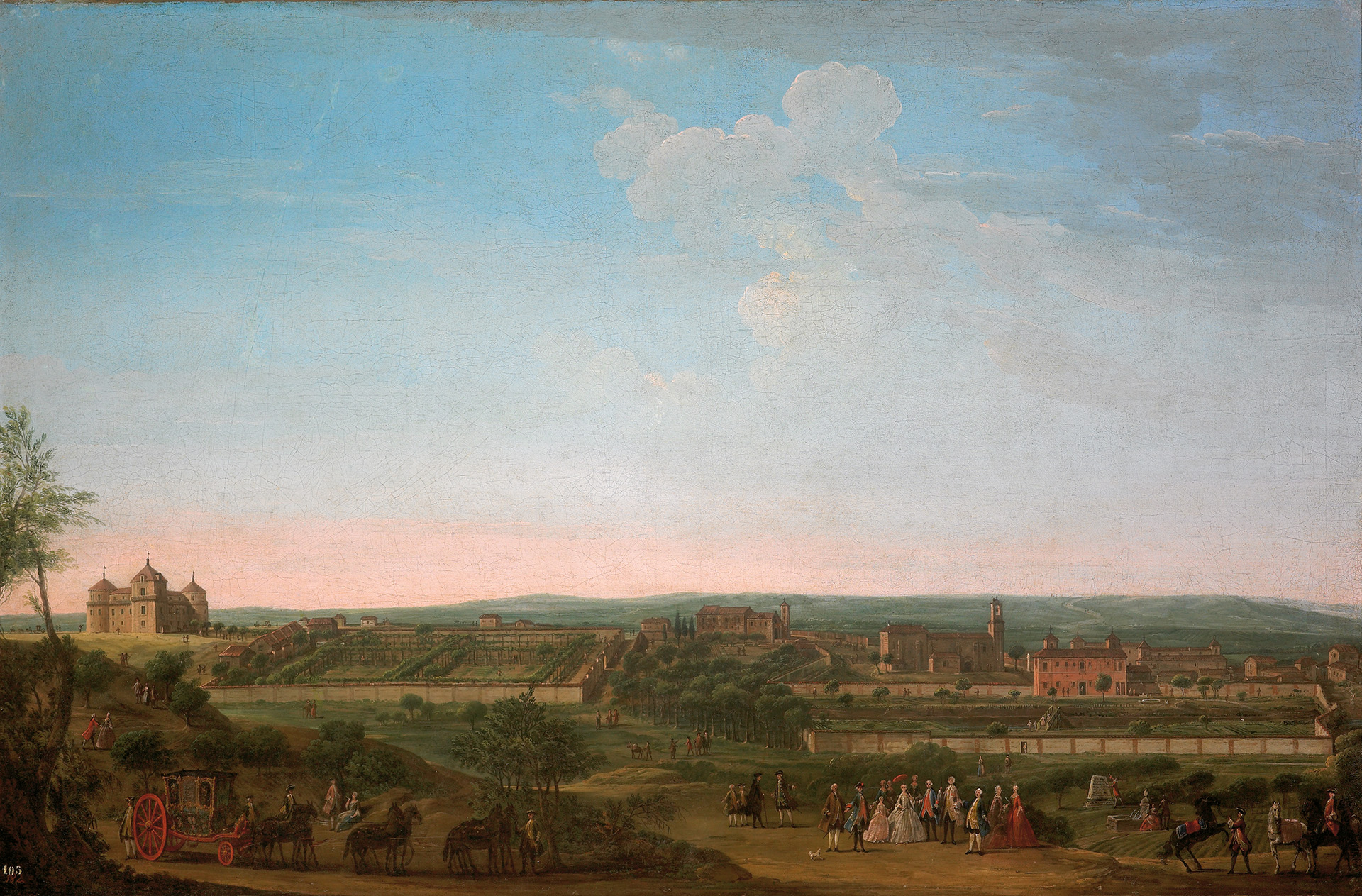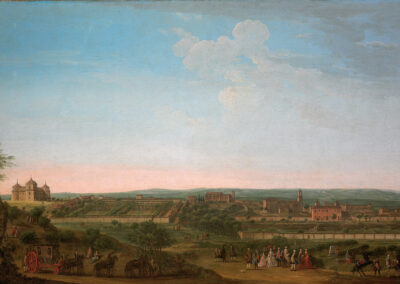From the difficult and imprecise reading of the inscription on the tombstone in the lower right-hand corner of this view, it has been deduced that it was commissioned in 1760 by the Marquis of Villacastel de Carrias, Joaquín Olivares de la Moneda, steward of King Philip V and King Ferdinand VI, immediately after the latter's death on 10 August 1759 ( Jesús Urrea, Madrid pintado, p. 104). If the reading of the author and the commissioner leaves no room for doubt, much less clear is the date of execution, which seems to read, rather, 1759, a year that would correspond to that of King Ferdinand VI's retirement to the castle of Villaviciosa de Odón on the death of Queen Barbara de Braganza in the summer of 1758. This date would be more consistent with a commission from the king's butler and with the small court scene, painted in the foreground, in which we can make out a saloon or gala carriage drawn by six horses, which seems to represent the arrival of the king, the day after the death of Barbara de Braganza, at the place chosen by the court so that he could forget the queen by distracting himself with his favourite hobby, hunting.
The former estate of Chinchón, of which the castle of Villaviciosa was the head, was acquired in 1738 by the infant Philip, later Duke of Parma, with the licence of his father King Philip V, with the purpose of providing him with a social status that would allow his marriage to Maria Luisa de Borbón, the first-born daughter of Louis XV. His early departure from Spain to aspire to the Duchy of Parma, transformed this place into one of the royal hunting grounds known as the "hunting grounds of Parma".Royal Forest of Villaviciosa"Of which only the castle remains today.


